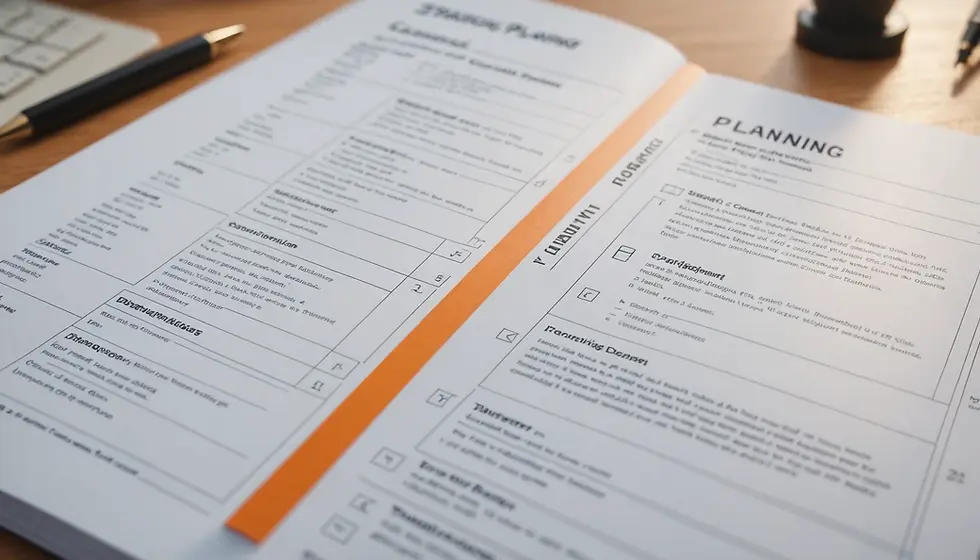Up-Listing to a National Exchange: Elevating Your OTC Company to the Next Level
- Haim Ratzabi
- Apr 30, 2023
- 4 min read
In this short article, we will explore the reasons why a company may choose to become an OTC company instead of remaining a private company.
Why Companies Consider Being an OTC Company:
In general, OTC markets aim to provide small public companies with access to investors and liquidity. Rather than competing with national exchanges, OTC markets cater to smaller investors and businesses seeking to grow. They have lower listing requirements and investor standards, making it easier for small companies to list their shares and gain funding.
Access to funding - Firstly, OTC markets provide a platform for small public companies to access investors and liquidity. This means that even if a company is not able to meet the stringent listing requirements of large national exchanges such as NASDAQ or NYSE, they can still have access to funding and investment opportunities through the OTC markets.
Lower listing requirements - OTC markets offer more flexibility than larger exchanges. It has lower listing requirements and investor standards, which means that smaller companies can list their shares without having to meet the same regulatory hurdles as those on larger exchanges.
Lower costs - OTC markets generally have lower fees than larger exchanges. This means that smaller companies can save money on listing and compliance costs, which can be a significant expense for companies looking to grow.
Less competition - OTC markets cater to smaller investors and businesses, which can be advantageous for companies that are looking to grow. This means that the competition is lower, and smaller businesses may find it easier to gain a foothold and build their reputation.
Access to funding: OTC markets provide a platform for small public companies to access investors and liquidity. Even if a company is not able to meet the stringent listing requirements of large national exchanges such as NASDAQ or NYSE, they can still have access to funding and investment opportunities through the OTC markets.
Up-listing from OTC to Nasdaq
There are two primary reasons why companies choose to up-list. Firstly, they may have outgrown the OTC markets and seek to sustain further growth. These companies are often expanding and striving to increase their market share. The up-listing event is sometimes regarded as the company's second IPO, and they may raise capital with the help of an underwriter or investment banker during this process.
Secondly, some companies up-list because they meet the listing requirements and recognize the benefits of being listed on a national exchange. Apart from gaining increased access to capital, there is a certain prestige that comes with such a listing, which opens up marketing avenues. Additionally, there is less liquidity risk for brokerages due to higher trading volumes and the ability to deposit shares into brokerages.
What are the 5505. Initial Listing of Primary Equity Securities
A Company applying to list its Primary Equity Security on the Capital Market must meet all of the requirements set forth in Rule 5505(a) and at least one of the Standards in Rule 5505(b).
(a) Initial Listing Requirements for Primary Equity Securities:
(1) (A) Minimum bid price of $4 per share; or
(B) Minimum closing price of $3 per share, if the Company meets the requirements of the Equity or Net Income Standards under Rules 5505(b)(1) or (b)(3), or of $2 per share, if the Company meets the requirements of the Market Value of Listed Securities Standard under Rule 5505(b)(2), provided that in either case the Company must also demonstrate that it has net tangible assets (i.e., total assets less intangible assets and liabilities) in excess of $2 million, if the issuer has been in continuous operation for at least three years; or net tangible assets in excess of $5 million, if the issuer has been in continuous operation for less than three years; or average revenue of at least $6 million for the last three years. A security must meet the applicable closing price requirement for at least five consecutive business days prior to approval. For purposes of this paragraph (B), net tangible assets or average revenues must be demonstrated on the Company's most recently filed audited financial statements filed with, and satisfying the requirements of, the Commission or Other Regulatory Authority, and which are dated less than 15 months prior to the date of listing.
(2) At least 1,000,000 Unrestricted Publicly Held Shares;
(3) (i) At least 300 Round Lot Holders; and (ii) at least 50% of such Round Lot Holders must each hold Unrestricted Securities with a Market Value of at least $2,500; provided that (ii) shall not apply to a Company whose business plan is to complete one or more acquisitions, as described in IM-5101-2;
(4) At least three registered and active Market Makers;
(5) If the security is trading in the U.S. over-the-counter as of the date of application, such security must have a minimum average daily trading volume of 2,000 shares over the 30 trading day period prior to listing (including trading volume of the underlying security on the primary market with respect to an ADR), with trading occurring on more than half of those 30 days, unless such security is listed on the Exchange in connection with a firm commitment underwritten public offering of at least $4 million; and
(6) In the case of ADRs, at least 400,000 issued.
The process of up-listing an OTC company to NASDAQ can be complicated and requires expertise. It is advisable to consult with experts in the field for guidance on navigating the process.
Sources:
Up-listing from an OTC to a National Exchange - http://bitly.ws/DLxN
5500. THE NASDAQ CAPITAL MARKET - http://bitly.ws/DLxT





Great insights on OTC trading services! Thanks for sharing this valuable information.